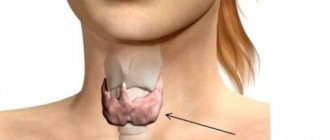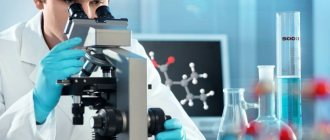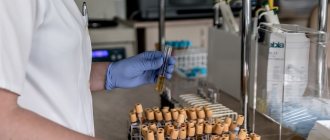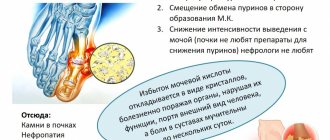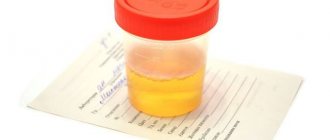In the overwhelming majority of cases of ARVI, including coronavirus, antibiotics are not needed, according to the Russian Ministry of Health. Bacterial infection can be determined by several blood test parameters.
Altai and Russian doctors have recently been talking a lot about the dangers of prescribing antibiotics for signs of acute respiratory viral infection from the first days of illness, especially on their own. In the vast majority of cases, such treatment is unjustified, since viral pneumonitis and bacterial pneumonia are different diseases. And yet there are situations when bacteria join viruses. The most obvious sign is the appearance of purulent sputum. But the best way to tell is blood tests.
Detailed description of the study
Procalcitonin is a protein molecule. Normally, it is produced in the cells of the thyroid gland. It produces the hormone calcitonin. Procalcitonin is involved in the regulation of phosphorus and calcium metabolism and prevents bone fragility. Normally, its amount in the blood is minimal.
When bacteria enter the body, biological substances that cause inflammation (cytokines) - interleukin-6 and tumor necrosis factor - begin to be produced. They, together with bacterial toxins, stimulate the formation of procalcitonin in atypical places - the liver, kidneys, fat cells and its entry into the blood. In response to viruses, a significant increase in the indicator does not occur, so the molecule is a specific marker of bacterial infection.
Procalcitonin increases within a few hours after bacteria enter the body and disappears within a day. An increase in procalcitonin in people with severe infections occurs earlier than an increase in other markers of acute inflammation (C-reactive protein, ESR), which is important for timely diagnosis. It should be borne in mind that procalcitonin makes it possible to assess the body’s response to infection, but not to determine the specific pathogen. Blood cultures are used for this.
Procalcitonin plays a special role in the early detection of sepsis. This is a life-threatening condition in which there is an inadequate response of the body to infection. Mandatory criteria are the presence of an infectious focus with signs of damage to several organs. Most often, sepsis is combined with a systemic inflammatory reaction, the characteristic manifestations of which are changes in body temperature, an increase in respiratory rate and heart rate.
A procalcitonin test is used to determine the risk of a bacterial infection against a viral background. It is important to monitor the dynamics: at the beginning of the disease, when there is only a virus, the value of the indicator will be within normal limits.
There are other factors that cause an increase in procalcitonin in the blood. It can be physiological in newborns in the first two days and short-term with extensive injuries and burns. The level also increases with certain tumors, fungal infections, and circulatory failure.
A special role of the procalcitonin test is the rational use of antibiotics. The value of the indicator directly depends on the activity of the infection. Based on the dynamics of its decrease or increase, you can adjust your medication regimen. This is important in the context of growing antibiotic resistance in the world.
Determination of procalcitonin levels is an important indicator in the diagnosis of bacterial infections. The analysis helps diagnose sepsis at an early stage, assess the severity of the condition during monitoring over time, and prescribe adequate drug therapy.
Indicators: norms and deviations
Most laboratories that test blood for a fee indicate reference values in the results - the “plug” of the norm. These are the ones you should focus on first.
All information presented below is taken from open sources and is primarily for informational purposes only. Only a doctor can interpret test results and prescribe medications for treatment.
C-reactive protein
C-reactive protein (CRP) is an acute phase protein of inflammation. It increases within 6 hours after the onset of the disease and increases 10-100 times within 24-48 hours.
May 28, 8:00
Is it worth testing for antibodies to coronavirus and where to do it in Barnaul?
Test for immunity to coronavirus: why is it needed, how much does it cost, how is it carried out and the dangers of asymptomatic disease
This indicator is the main laboratory marker of the activity of the process in the lungs. Its increase is directly dependent on the extent of damage to the lung tissue and is the basis for starting anti-inflammatory therapy, according to the Russian Ministry of Health.
Normally, the C-reactive protein (CRP) level should not exceed 1 mg/l. If the level of CRP exceeds 10 mg/l, this may be evidence of an ongoing infectious inflammatory disease, according to specialists from the Helix laboratory.
High levels of CRP (more than 100 mg/l) are observed with bacterial infection. With a mild viral infection, the level of CRP, as a rule, does not exceed 20 mg/l.
The clinical recommendations of the Ministry of Health for the treatment of COVID-19 indicate that exceeding 30 mg/l indicates a moderate to severe course of the viral infection. When CRP is above 60 mg/L, patients in hospitals are prescribed immunosuppressants to combat cytokine storm (excessive inflammatory response of the immune system).
CRP levels may also increase due to pregnancy, intense physical activity, oral contraceptives, and hormone replacement therapy. CRP may decrease due to the use of nonsteroidal anti-inflammatory drugs (NSAIDs), corticosteroids, statins, and beta blockers.
Leukocytes, neutrophils and ESR
Most patients with COVID-19, according to the Russian Ministry of Health, have a normal number of leukocytes. A third have leukopenia – a decrease in white blood cells (below 4*10 to the 9th degree/l). Severe leukopenia (below 1*10 in the 9th degree/l) is characteristic of a cytokine storm and requires hospitalization.
October 22, 6:04
To the pharmacy 250 km away. How Barnaul residents bought up vital medicines
Patients with chronic diseases, bacterial infections and pregnant women are forced to reserve emerging drugs
Leukocytosis (increased white blood cells) is characteristic of a bacterial infection, not a viral one. The Ministry of Health of the Russian Federation considers an indicator above 10 * 10 to the 9th power / l in combination with other signs in adults to be a basis for considering the issue of taking antibiotics. At the same time, in clinical recommendations for the treatment of acute respiratory infections in children edited by Baranov, leukocytosis is called an indicator of over 15 * 10 to the 9th degree / l.
According to the Invitro laboratory, in adults, neutrophilia (a significant increase characteristic of a bacterial infection) is considered to be more than 7.5 * 10 to the 9th power / l. Neutropenia (significant decrease) is considered to be a decrease in the absolute amount below 1.8 thousand per microliter. In recommendations for the treatment of acute respiratory infections in children, an increase in neutrophils is considered to be over 10 thousand per microliter.
The Ministry of Health of the Russian Federation does not provide exact data on the level of ESR, so it should be assessed based on laboratory reference values.
Procalcitonin
Autoimmune diseases, chronic inflammatory processes, viral infections and mild local bacterial infections rarely lead to an increase in procalcitonin of more than 0.5 ng/ml.
November 03, 6:04
Encephalitis and the tongue is larger than the mouth: how Altai children cope with Covid
In the Altai Territory, approximately 1% of children suffer from coronavirus severely, the rest are mildly ill or generally asymptomatic
Unlike other tests, the assessment of this indicator is quite expensive, so it is rarely taken during outpatient treatment. The Ministry of Health of the Russian Federation recommends taking blood for procalcitonin when patients with COVID-19 are admitted to hospital for early assessment of the risk of death and to exclude a bacterial infection.
According to the Invitro laboratory, procalcitonin levels below 0.25 ng/ml may be a reason to refrain from using antibiotics or stop taking them.
References
- Septic complications in obstetrics. Clinical guidelines (treatment protocol), 2021. - 45 p.
- Methodological recommendations Algorithm for the use of procalcitonin during antibacterial therapy (including in patients with complicated forms of COVID-19). — Moscow Department of Health, 2021. — 26 p.
- Kent, A., Maha, A. Procalcitonin in Respiratory Diseases: Use as a Biomarker and guiding antibiotic therapy, 2021. - Vol. 15(4). — P. 296-304.
Complete blood count and inflammation: when are antibiotics indicated?
A general blood test is undoubtedly the most popular of all existing tests. And for good reason, because its capabilities, among other things, make it possible to detect not only the presence and degree of inflammation, but also to determine its “origin” in relation to the pathogen. This means that the choice in favor of antibacterial or antiviral therapy can be made in the very first days of inflammation, which will not only speed up recovery, but will also significantly reduce the risk of serious complications.
Leukocyte squads
For the “uninitiated” people, a general blood test with a leukocyte formula (1.0.D2.202) most often looks like “Chinese”. To find a “sentence” about the nature of inflammation, which, at first glance, seems completely impossible. Whereas in fact, for a primary clarification of the nature of the infection, a “cursory” assessment of the number of various representatives of leukocytes is often sufficient.
1. Neutrophils
The “instant response group” in the fight against bacteria are neutrophils, the relative (%, in relation to other types of leukocytes) increase in which in a general blood test is a reliable marker of any bacterial inflammation and, accordingly, justification in favor of the antibacterial nature of treatment.
Whereas an absolute increase in the number of neutrophils (cells per liter of blood) often accompanies fairly severe forms of infections.
These representatives of leukocytes are the very first to migrate from the blood to the site of inflammation, where they literally “eat” and “digest” the enemy with the help of “poisonous” granules.
True, after such a “snack”, the neutrophils themselves become unviable and die. And the clinical reflection of this process is the formation of pus at the site of inflammation.
2. Lymphocytes
Simultaneously with the increase in neutrophils, in the blood of a “bacterial” patient there is a relative (%) decrease in the main virus fighters – lymphocytes, which is a reflection of the normal redistribution of “immune assets” for the current tasks of protection. And the process itself is called “relative lymphopenia”.
3. Monocytes
As “liquidators of the consequences” of inflammation, monocytes are “pulled” from the blood into the focus. Which are already “in place” transformed into larger ones - macrophages, and effectively cleanse the “space” of destroyed cells and bacteria.
The maximum increase in monocytes in a general blood test is usually observed only at the very end of inflammation, as a marker of the completion of the process and the beginning of the recovery period.
And, among other things, monocytes are universal “soldiers” and are involved in both bacterial and viral (especially herpetic origin), as well as autoimmune and some other mechanisms of inflammation. Therefore, their increase to one degree or another is characteristic of almost all types of inflammatory process.
When should I take an AT test against gliadin IgA (count)?
- As a screening test for clinical signs of celiac disease in children under 5 years of age: diarrhea, impaired weight gain;
- If extraintestinal manifestations of celiac disease are suspected in children under 5 years of age: dermatitis herpetiformis and other skin manifestations, stomatitis, delay in physical and mental development, etc.;
- As part of the differential diagnosis of chronic anemia of unknown origin in children;
- With a prolonged increase in liver enzymes of unknown origin in children;
- As part of a comprehensive serological diagnosis of celiac disease in adults.
List of tests to detect genetic diseases
Some diseases are inherited and do not manifest themselves immediately, but modern medicine makes it possible to identify the risk of genetic diseases even during pregnancy. Gene mutations can lead to dangerous diseases such as Shereshevsky-Turner disease, Klinefelter disease, cystic fibrosis, Duchenne muscular dystrophy or hemophilia.
The list of tests to detect genetic diseases may vary - some of them are carried out immediately at the birth of a child as part of newborn screening. Others are detected using modern laboratory methods. Timely detection of genetic diseases allows you to take timely measures and save the child’s health.
List of tests to identify allergens
According to recent studies, up to 15% of children in Russia suffer from various forms of allergic diseases: food allergies, bronchial asthma, skin rashes, neurodermatitis, hay fever, etc. Their symptoms are quite well known: persistent runny nose, sneezing, increased tearing, swelling and peeling on the skin. When these signs appear, the doctor prescribes tests to identify allergies.
In general, a predisposition to allergic reactions is indicated by increased production of immunoglobulin E (IgE) proteins, determined during a general blood test, and allergen tests make it possible to determine the specific type of pathogen.
So, the list of tests to identify allergens is as follows:
- general blood test (if the level of eosinophils in the child’s blood is elevated, this is an indication for a detailed examination for allergies);
- enzyme immunoassay blood test for total immunoglobulin E (total IgE, IgE total);
- allergy tests using various panels (food, respiratory, pediatric) containing the most common allergens.
Advantages when taking tests at the ABV Center for Laboratory Technologies
The main thing in tests is their diagnostic function, therefore the main advantages when taking tests at the ABC Center for Laboratory Technologies are the speed and accuracy of execution. But, in addition to this, the Laboratory Technology Center offers young patients and their parents convenience and a special approach: you can take tests in any office at a time that suits you. Call and sign up for tests - take care of the health of your children.
Call: tel. 8-800-234-40-01 (toll-free), 8.
Features when taking tests as a child
You need to monitor the health of your baby, starting from his birth. The very first tests taken from the heel of newborns allow us to determine the presence or absence of hereditary diseases:
- phenylketonuria;
- congenital hypothyroidism;
- galactosemia;
- adrenogenital syndrome;
- cystic fibrosis (cystic fibrosis), and also examine the baby for Rh compatibility and jaundice.
After three months, a general blood test is routinely taken from the child and a biochemical test may be prescribed according to the doctor’s indications. The child also undergoes a routine examination upon admission to kindergarten and school: a general blood and urine test is taken, and, if necessary, a stool sample and swabs from the nose and throat.
Subsequently, the child must undergo an annual medical examination so that his condition can be monitored. And in case of illness, the necessary tests are prescribed by the doctor.
There are some peculiarities when taking tests for a child. To simplify the procedure for collecting biomaterial, in some cases capillary rather than venous blood is taken from children. And standard test results in children vary depending on age—sometimes a six-month difference can be significant. For children there is a special scale of indicators.
One of the most frequently prescribed tests are tests for children to identify allergies, viral and genetic diseases. Let's take a closer look at them.





